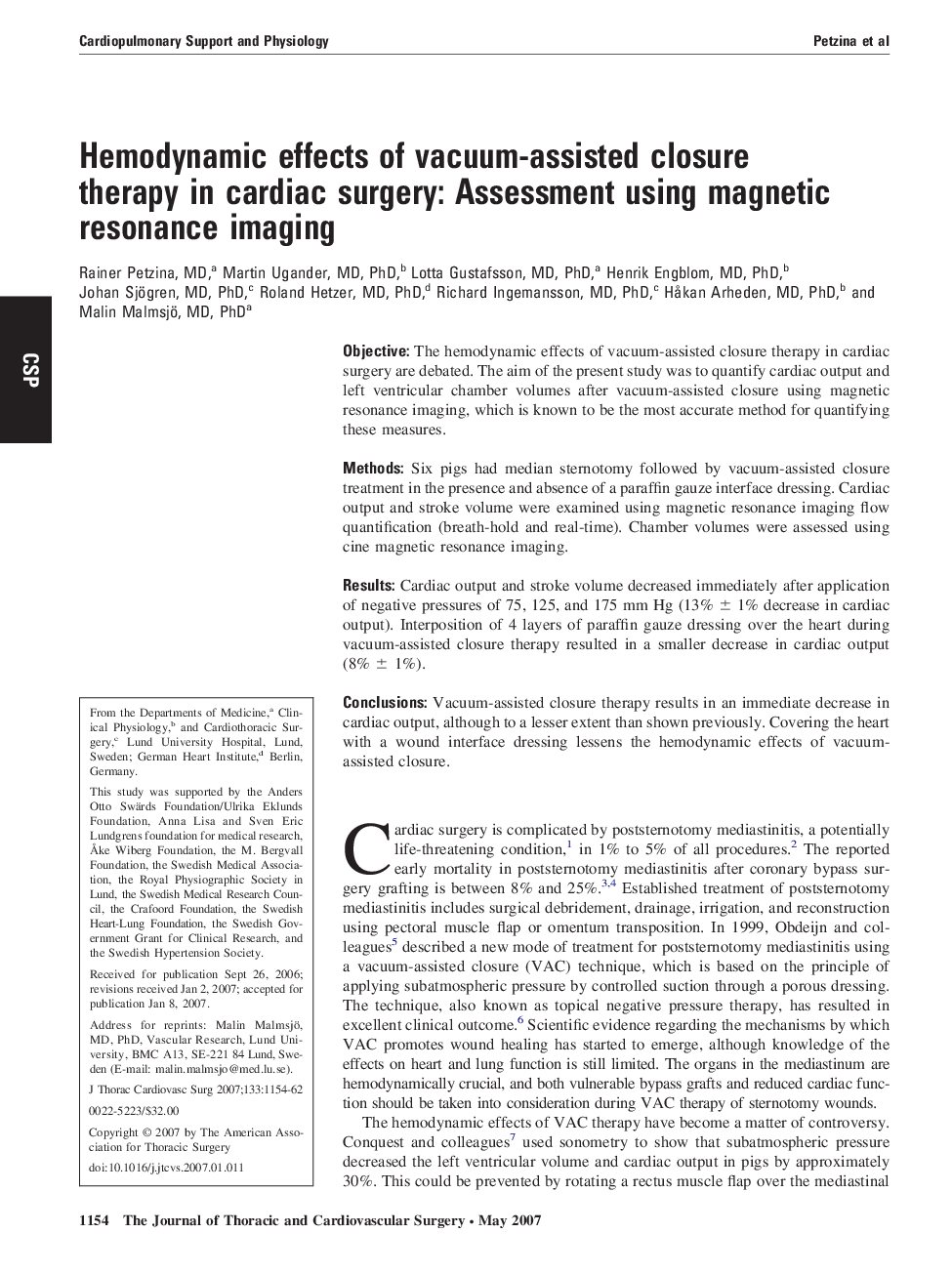| Article ID | Journal | Published Year | Pages | File Type |
|---|---|---|---|---|
| 2984248 | The Journal of Thoracic and Cardiovascular Surgery | 2007 | 9 Pages |
ObjectiveThe hemodynamic effects of vacuum-assisted closure therapy in cardiac surgery are debated. The aim of the present study was to quantify cardiac output and left ventricular chamber volumes after vacuum-assisted closure using magnetic resonance imaging, which is known to be the most accurate method for quantifying these measures.MethodsSix pigs had median sternotomy followed by vacuum-assisted closure treatment in the presence and absence of a paraffin gauze interface dressing. Cardiac output and stroke volume were examined using magnetic resonance imaging flow quantification (breath-hold and real-time). Chamber volumes were assessed using cine magnetic resonance imaging.ResultsCardiac output and stroke volume decreased immediately after application of negative pressures of 75, 125, and 175 mm Hg (13% ± 1% decrease in cardiac output). Interposition of 4 layers of paraffin gauze dressing over the heart during vacuum-assisted closure therapy resulted in a smaller decrease in cardiac output (8% ± 1%).ConclusionsVacuum-assisted closure therapy results in an immediate decrease in cardiac output, although to a lesser extent than shown previously. Covering the heart with a wound interface dressing lessens the hemodynamic effects of vacuum-assisted closure.
